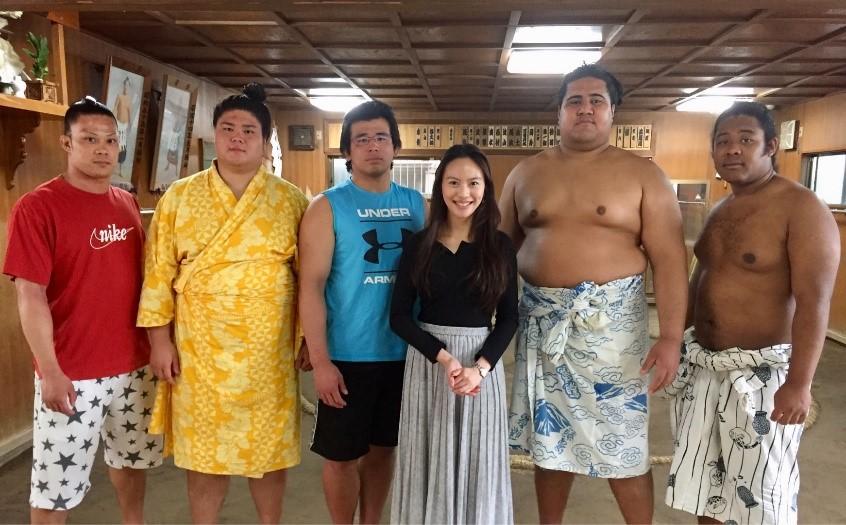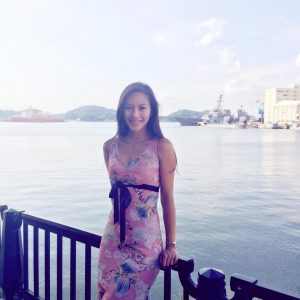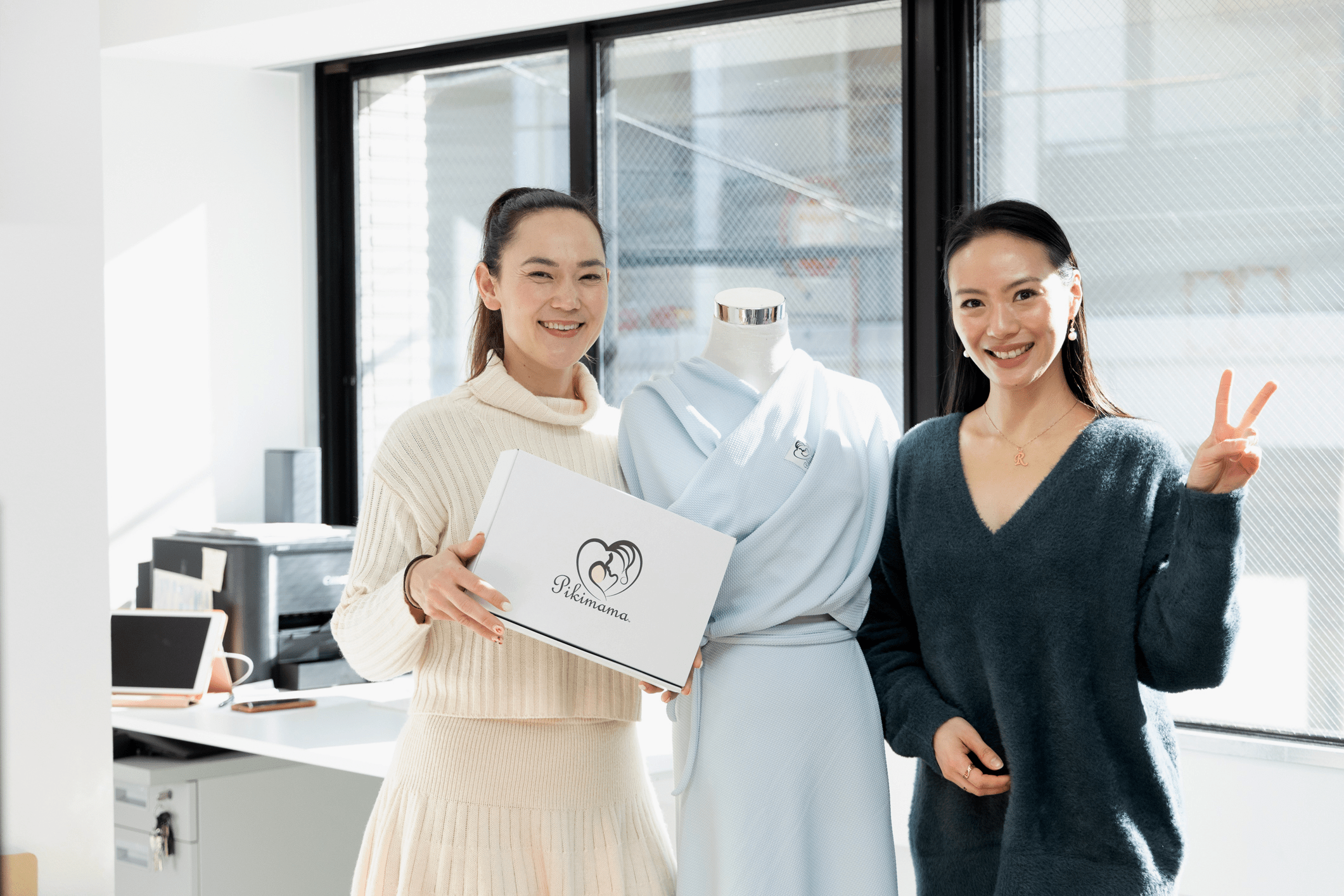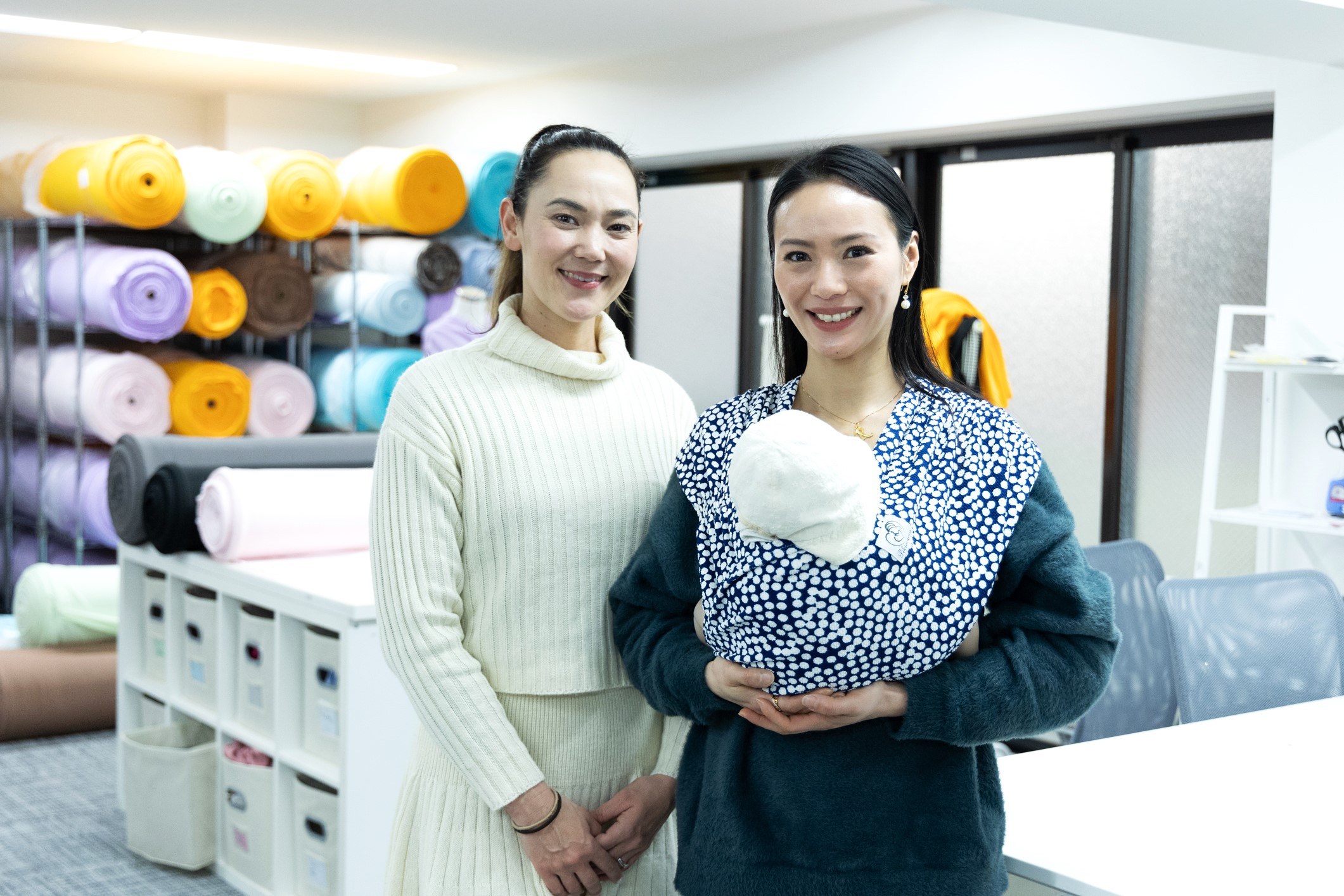Group photo with the sumo wrestlers at Musashigawa-beya
お相撲さんたちと一緒にグループ写真を撮りました~
To the Japanese, sumo is not merely a popular wrestling sport, it has long been performed ritually at festivals since ancient times. Many ancient traditions have been preserved in sumo, and even today the sport includes many ritual elements, such as the use of salt purification, from Shinto. Life as a wrestler is highly regimented, with rules regulated by the Japan Sumo Association, and tickets to sumo tournaments are pricey and often sold out. This is one of the reason why, besides watching sumo matches on TV, we usually have few occasions to enter the world of sumo.
Most sumo wrestlers (力士, rikishi) are required to live and practice in communal sumo training stables, known in Japanese as heya(部屋), where all aspects of their daily lives—from meals to their manner of dress—are dictated by strict tradition.
日本人にとって、相撲はとても大事なスポーツですね。皆様、自分自身で、直接お相撲さんに会ったことがありますか?先日、私は武蔵川部屋に行く機会がありました!朝稽古を見学に行きました。素晴らしい経験でした!

Sumo wrestlers wake up early in the morning and train hard in the hope of moving up the ranks (mornings in a sumo stable such as Musashigawa-beya can begin at around 5:00 am, everyday). The rare opportunity to visit a stable during one of these morning practices, called asageiko, lets you watch the action close-up!
I had an awesome experience visiting Musashigawa-beya recently.
The Musashigawa-beya sumo stable is run by oyakata (stable master) Musashigawa Mitsuhide, formerly yokozuna (sumo’s highest rank)Musashimaru.
Born and raised in Hawaii, Musashimaru was one of the first non-Japanese sumo wrestlers when he came to Japan to train. As of his retirement, Musashimaru had 779 wins with 12 championships, and holds the record for the most consecutive tournaments without a losing record! Amazing!!
Musashigawa-beya had 18 disciples when I visited. Besides living in Musashigawa-beya, they undergo harsh training every day, with wrestling practice in the morning (called asageiko 朝稽古) and gym sessions in the afternoon. (Click HERE to read more about the stable.)
第14代武蔵川親方(57代横綱三重ノ海)の定年に従い、その弟子であった第67代横綱武蔵丸光洋(当時年寄大島)に年寄名を譲る事となり、武蔵川光偉(むさしがわ みつひで)、年寄り跡の継承を経て、平成25年4月1日、財団法人日本相撲協会の認可のも武蔵川部屋は創設されました。(武蔵川部屋のウェッブサイトより:http://musashigawa.com/)
私が行く時、力士は18人いらっしゃいました。力士達は武蔵川部屋に住んで、午前中は激しい練習(朝稽古)と午後はジムセッションなど、毎日厳しい訓練を受けているらしいです。力士になるためのトレーニングは苦しくて、大変ですね!
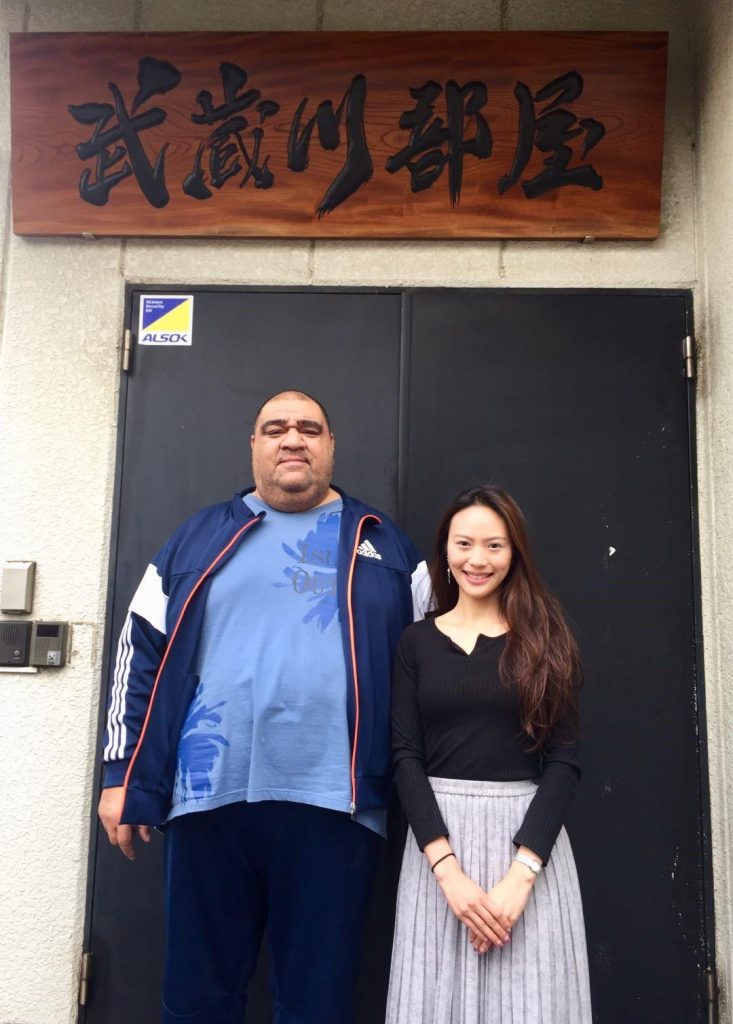
Together with Musashimaru in front of Musashigawa-Beya sumo stable. He is huge! However, over lunch later Musashimaru mentioned that he is now only about half the size he was before (currently at about 160 kgs, but weighed in at 260kgs in his tournament days)
武蔵川部屋の前で武蔵丸さんと一緒に写真を撮りました~ 彼は巨大ですね!
しかし、武蔵丸さんによると、以前の大きさは今の役2倍ぐらいだったそうです!(トーナメント時代の体重は260kgもありますが、今は約150kgぐらいですので、100kgぐらい痩せましたと言っていました。瘦せた分は私の2人分と同じですよ!信じられないです!)
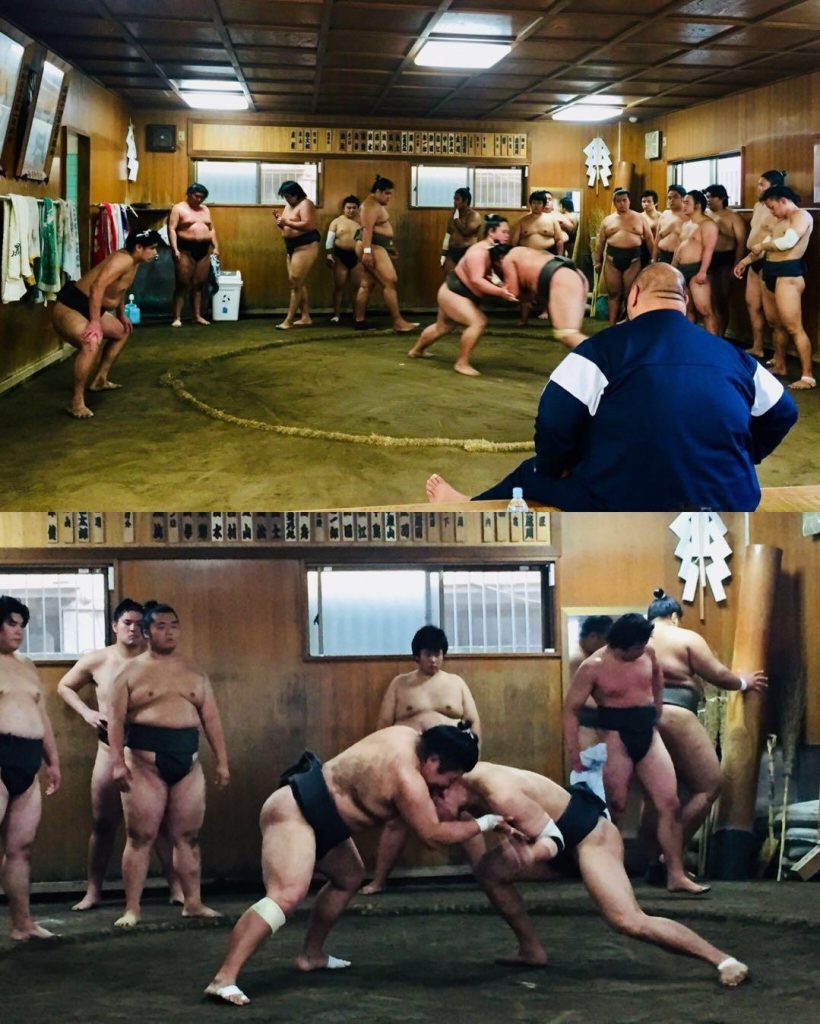
At the center of the ring are two white lines, the shikiri-sen, behind which the wrestlers position themselves at the start of the bout. All the wrestlers were awesome!
土俵の中央には白い仕切り線が見えます。 すべての力士達は最高でした!
| IMPORTANT NOTES when observing sumo practice Sumo matches take place in a ring called the dohyō (土俵) – it is 4.55 m in diameter and 16.26 m2 in area, made of rice-straw bales on top of a platform made of clay mixed with sand. A roof resembling that of a Shinto shrine may be suspended over the dohyō . 1. Observe the practice quietly with minimal talking! 2. Be aware that the bottoms of your feet do not face the ring as this is considered disrespectful to the Sumo god! 相撲の稽古を見学する場合の注意点 相撲は「土俵」と呼ばれる円の上で力士が組み合って戦うもので、天下泰平や豊作を祈るために神に捧げられた神事に由来します。 1. 神聖なスポーツでもある相撲の稽古を見学する際は、私語は慎み、静かに見学しましょう。 2. 足の裏は、土俵に直面していないことに注意してください!これが相撲の神に無礼とみなされますよ! |
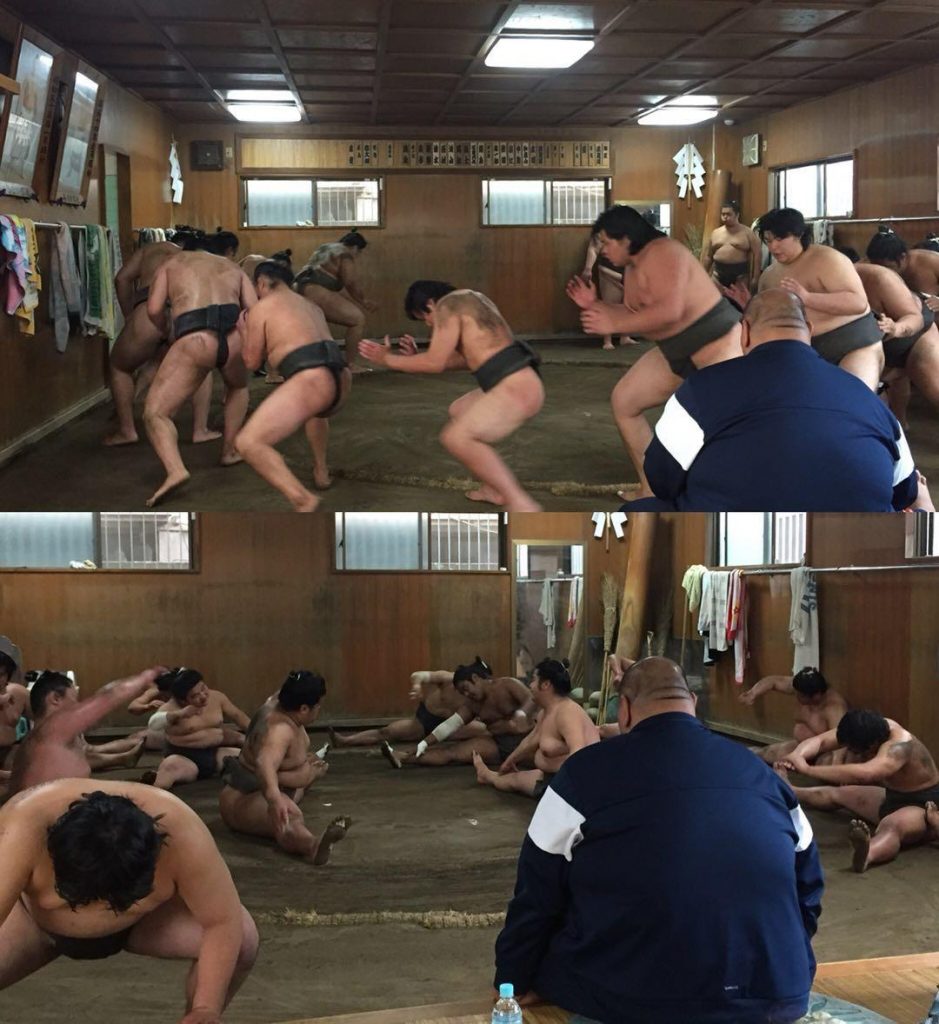
The morning practice finished off with some training drills and stretching. I was surprised at how flexible the wrestlers were when doing the splits!
朝稽古はストレッチで終わりました。お相撲さんの体はそんなに柔らかいと思わなかったです!びっくりしました。すごいですね
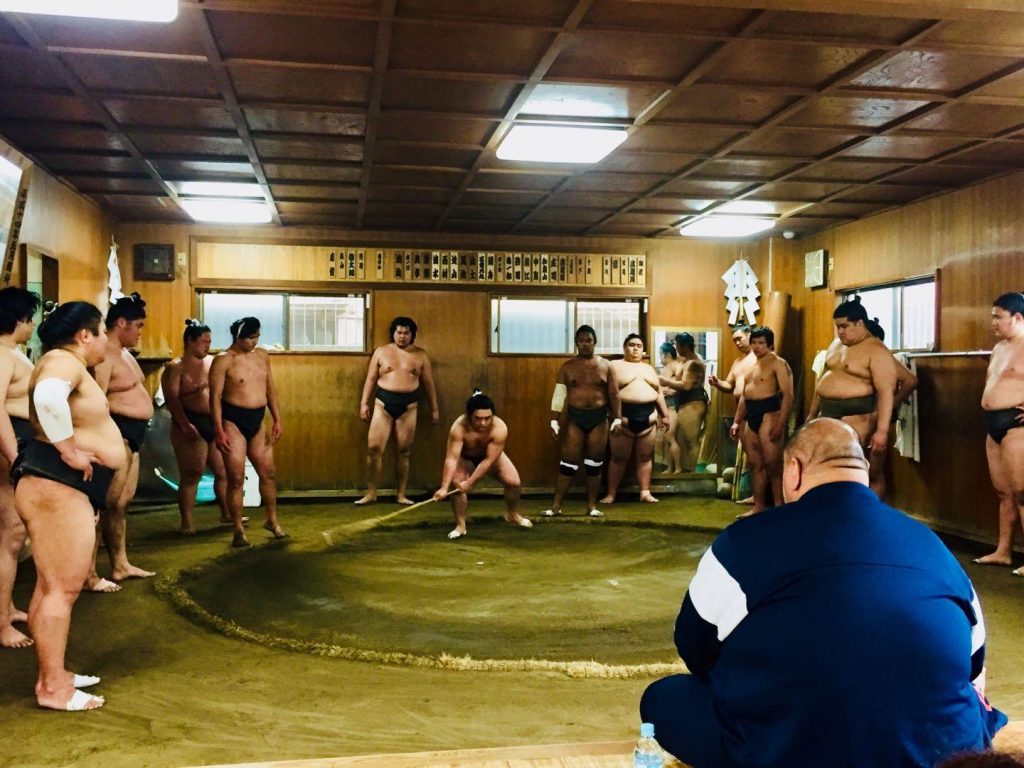
Sweeping the ring in between rounds.
練習の間に土俵を掃きます。
After the morning practice, we had lunch of chankonabe (ちゃんこ鍋、Japanese stew commonly made and eaten in vast quantity by sumo wrestlers)together with Musashimaru. It was fascinating to hear of his experiences and stories!
朝稽古の後、武蔵丸さんと一緒にちゃんこ鍋を食べました。美味しい食事をたべながら、色んな面白いお話を聞きました。
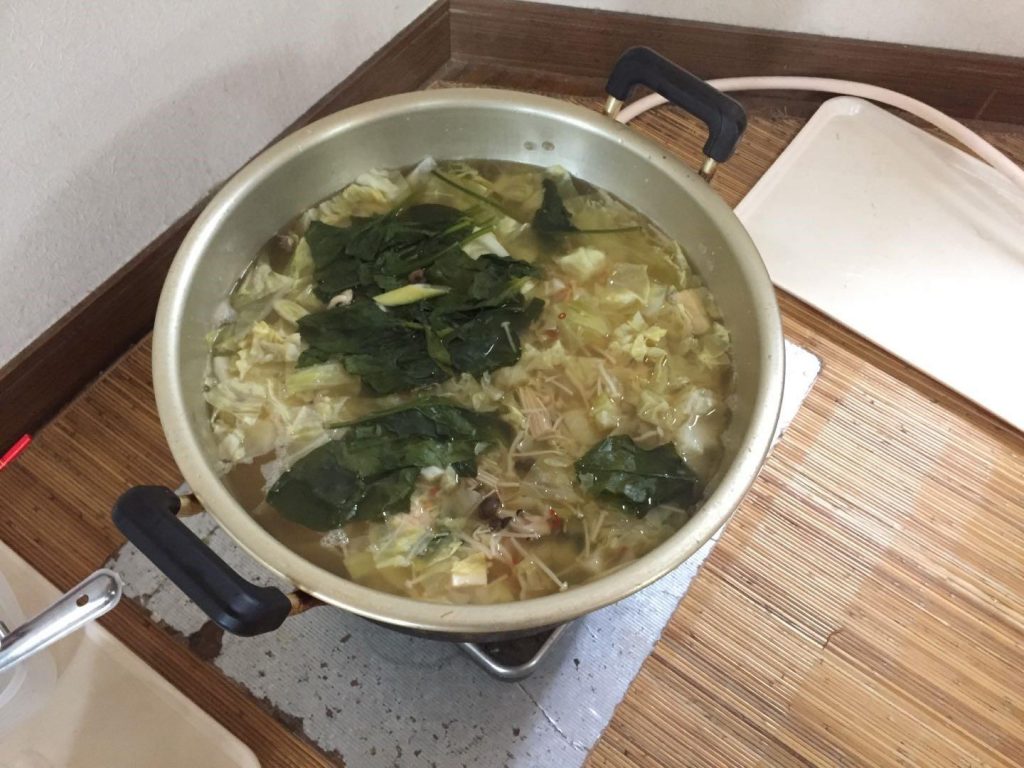
Chankonabe stew made by the wrestlers!
お相撲さんが作ったちゃんこ鍋です。美味しかったですよ!
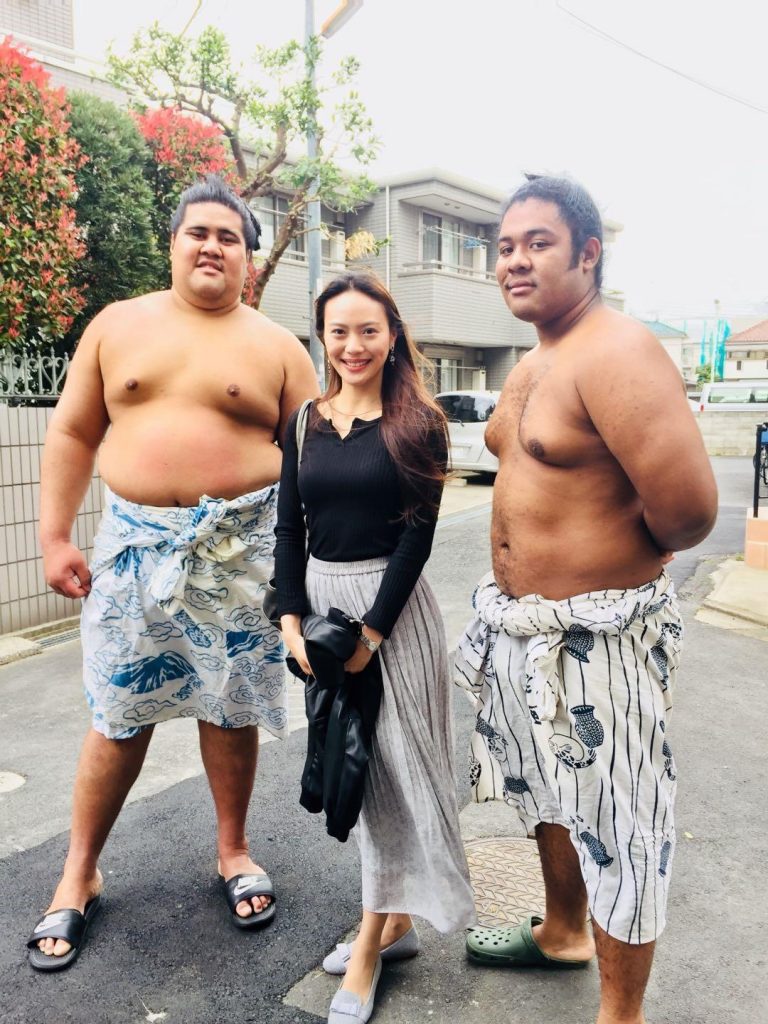
Left: Musashikuni, Musashimaru’s Nephew, top ranking in stable;
左:武蔵国(武蔵丸の甥)、武蔵川部屋のトップランクの力士らしいです。
Right: Wakaichirou originally from Houston, Texas
右:若一郎、テキサスのヒューストンから来ました。
****
日本の伝統を体験できて、良い一日でした!

